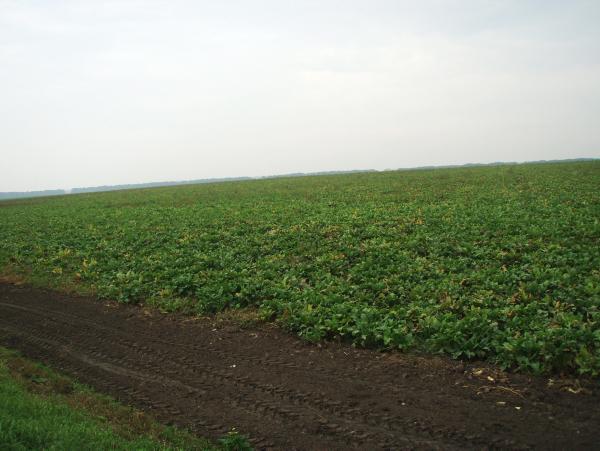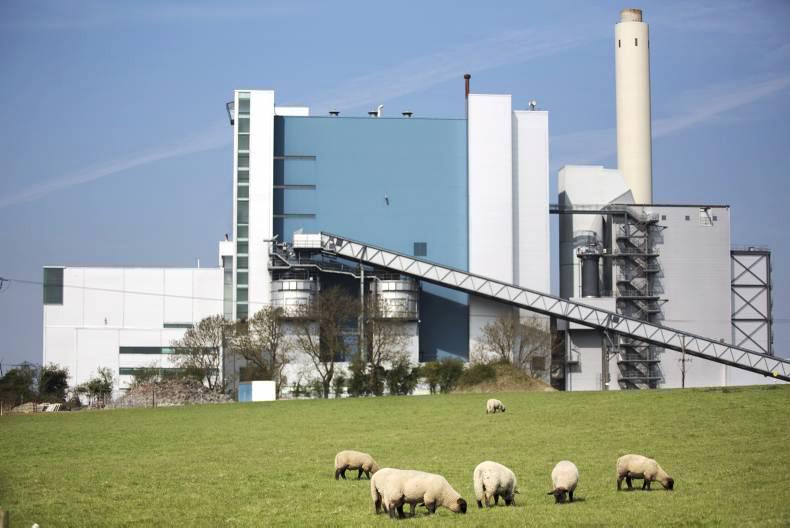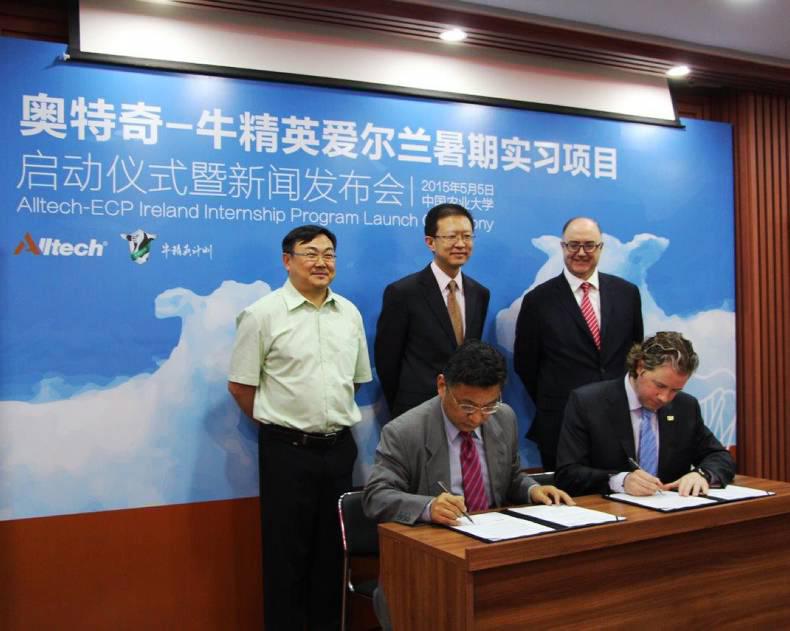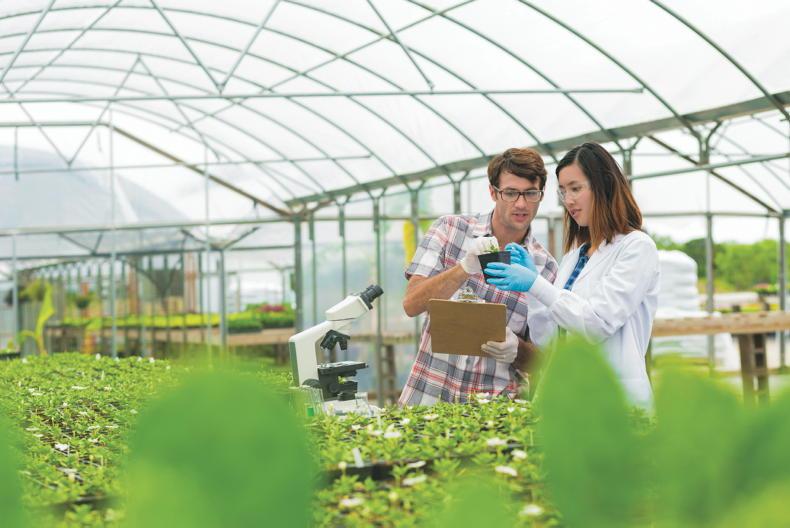Enormous changes have taken place in Ukraine over the last 10 years. The progress is ongoing and unstoppable. The current public demonstrations are merely the end-game in a protracted move from Russian domination to full European democracy.
Ukraine’s strong desire for integration into the European Union should be welcomed and encouraged. Contrary to what we see on TV, life continues apace and especially in the Ukrainian countryside. There is nothing new about events in Kiev. For centuries, Ukraine was always a country to be both courted and fought over.
This happened because of:
Ukraine’s pivotal geopolitical position between east and west.Its large land bank of highly fertile black soils with plenty of fresh water.Its capacity to produce big crops and high quality livestock products at least cost.For these reasons the Ukraine is now one of the hottest properties in the investment portfolios of international agricultural investors.
From an investor’s perspective the Ukraine is the biggest country in Europe and is still relatively under-developed. It has enormous tracts of prime agricultural land available long term at low rents and low production costs. It provides great opportunity for scale and the integration of production and processing.
It has good infrastructure and transport logistics for internal movement and exporting. There are enormous opportunities for agri-business growth and development.
It also has a large and well educated population with a rapidly emerging middle class of discerning consumers.
At first sight there are few, if any, countries with more contradictions than Ukraine. For example, how does the biggest country in Europe with very good agricultural land end up importing over 50% of its consumer food requirements? And why are the most fertile agricultural lands in the world, also some of the least-productive?
But there is a very strong credit side to Ukraine which cancels out these extreme anomalies. Therefore, there are also few countries that show more potential. And these plusses are now encouraging International investors, especially in agricultural and food areas.
On the farming side, the farm-gate price for a litre of top quality milk in Ukraine is 50c. The average industrial wage is €75 per week, and agricultural land is available on long-term lease for €50 to €100 per acre.
America has the prairie; Argentina, the pampas; South Africa, the savannah while Russia and Ukraine have the steppe.
Any or all of these descriptions signify vast tracts of rolling and unbroken landscapes. They stretch out to the horizon and beyond. And the soils they contain are highly fertile. In central Europe they are aptly named ‘Chernozem’, the Russian for ‘black earth’.
The contrast with Irish farming could not be greater. Picture a bird’s eye view of a typical Irish country parish. It is roughly 50 square miles (32,000 acres). In the Ukraine this is the average size of a typical old state farm, most of which are now privately-owned corporate farms.
Your parish is criss-crossed by a network of hedges, fences, country roads and farm roadways, totalling roughly 1,500 miles in length. The landscape will be a patchwork quilt of about 5,000 fields. Add in approximately 200 private properties and you have a bird’s eye view of a typical Irish country parish.
In contrast, the 10,000 hectare (25,000 acres) Ukrainian corporate farm is one very big farm in one very big field.
The scope for achieving economy of scale is both enormous and self-evident. One large corporate farm in western Ukraine, the Mriya Agro-Holdings Group, is investing €500 million in just farm machinery and equipment. That is €60 million more than 120,000 Irish farmers spent purchasing new machinery and equipment last year. This scale of investment will obviously have huge implications for Irish agriculture.
The Ukraine’s capacity to produce the full range of food, agricultural and renewable energy products is well-known. Historically, Ukraine has been ‘The bread basket and the sugar bowl of Russia’. It has enormous capacity to produce wheat and sugar beet on a large scale.
Potatoes are still regarded as a ‘strategic crop’ in the Ukraine. They are grown in large tracts of land for a number of fast growing markets, e.g. Elite seed production, the retail trade through supermarkets, the production of chips, crisps, starch, food ingredients, alcohol, etc.
In addition, Ukraine has the capacity to produce a large range of other food, agricultural and renewable crops, as well as fruits, vegetables and energy crops. And all on a large scale.
However, the achievement of this potential depends on substantial further investment in machinery, equipment and technology; storage, transport and distribution logistics; training; management systems and services; food processing facilities and access to agri-inputs and services.
Market opportunities
The fast-growing Ukrainian food and agricultural enterprises offer export opportunities to progressive Irish companies. In return, the Ukraine can supply commodity inputs, e.g. fertilizers, to Irish Importers.
Irish companies are already in a position to supply high spec farm machinery, equipment and inputs to large scale Ukrainian agri-enterprises. And these products can be underpinned with the provision of modern farm management services to the same customers.
The World Bank/International Finance Corporation could be one of these customers.
This group is a very big investor in Ukrainian agricultural enterprises with $670 million invested since 2004. The agricultural sector accounts for around 30% of total World Bank/IFC investment in Ukraine.
It is estimated that a further $8 billion of investment is required to replace the current Ukrainian machinery fleet.
With appropriate investment it is estimated that the Ukraine has the capacity to quadruple food and agricultural production over the next 20 years.
Irish suppliers have the capacity to benefit from this investment. It is estimated that successful exports could create up to 5,000 new jobs here.
World-class Irish machinery and equipment companies have cut a path for others to follow. Leading animal health, pedigree breeders and farm input suppliers are also well-qualified to take on Ukraine.
For many years the Ukraine has been targeted by international agri-investors from the US, Britain, France, Germany, the Netherlands, Denmark, Canada, Saudi Arabia, Israel and China. The Irish have been slower but today a number of Irish companies are involved.
These include Cement Roadstone; IAWS/Origin agri-enterprises; Irish Dairy Board; Dairymaster; Kingspan; Irish Potato Marketing/Donegal Seed Potatoes; Keenans; JFC; Aer Rianta; the Quinn Group, etc.
In the absence of an Enterprise Ireland office in the Ukraine, the Irish-Ukrainian Trade Association (IUTA) was set up to promote inter-trade between the Ukraine and Ireland.
IUTA is doing invaluable work on behalf of Irish and Ukrainian agricultural exporters and importers.
The main driving forces behind IUTA are the Ukrainian ambassador, Sergiy Reva; first secretary (trade), Dmytro Matiuschenko, and IUTA president Patrick Carroll.
Enormous changes have taken place in Ukraine over the last 10 years. The progress is ongoing and unstoppable. The current public demonstrations are merely the end-game in a protracted move from Russian domination to full European democracy.
Ukraine’s strong desire for integration into the European Union should be welcomed and encouraged. Contrary to what we see on TV, life continues apace and especially in the Ukrainian countryside. There is nothing new about events in Kiev. For centuries, Ukraine was always a country to be both courted and fought over.
This happened because of:
Ukraine’s pivotal geopolitical position between east and west.Its large land bank of highly fertile black soils with plenty of fresh water.Its capacity to produce big crops and high quality livestock products at least cost.For these reasons the Ukraine is now one of the hottest properties in the investment portfolios of international agricultural investors.
From an investor’s perspective the Ukraine is the biggest country in Europe and is still relatively under-developed. It has enormous tracts of prime agricultural land available long term at low rents and low production costs. It provides great opportunity for scale and the integration of production and processing.
It has good infrastructure and transport logistics for internal movement and exporting. There are enormous opportunities for agri-business growth and development.
It also has a large and well educated population with a rapidly emerging middle class of discerning consumers.
At first sight there are few, if any, countries with more contradictions than Ukraine. For example, how does the biggest country in Europe with very good agricultural land end up importing over 50% of its consumer food requirements? And why are the most fertile agricultural lands in the world, also some of the least-productive?
But there is a very strong credit side to Ukraine which cancels out these extreme anomalies. Therefore, there are also few countries that show more potential. And these plusses are now encouraging International investors, especially in agricultural and food areas.
On the farming side, the farm-gate price for a litre of top quality milk in Ukraine is 50c. The average industrial wage is €75 per week, and agricultural land is available on long-term lease for €50 to €100 per acre.
America has the prairie; Argentina, the pampas; South Africa, the savannah while Russia and Ukraine have the steppe.
Any or all of these descriptions signify vast tracts of rolling and unbroken landscapes. They stretch out to the horizon and beyond. And the soils they contain are highly fertile. In central Europe they are aptly named ‘Chernozem’, the Russian for ‘black earth’.
The contrast with Irish farming could not be greater. Picture a bird’s eye view of a typical Irish country parish. It is roughly 50 square miles (32,000 acres). In the Ukraine this is the average size of a typical old state farm, most of which are now privately-owned corporate farms.
Your parish is criss-crossed by a network of hedges, fences, country roads and farm roadways, totalling roughly 1,500 miles in length. The landscape will be a patchwork quilt of about 5,000 fields. Add in approximately 200 private properties and you have a bird’s eye view of a typical Irish country parish.
In contrast, the 10,000 hectare (25,000 acres) Ukrainian corporate farm is one very big farm in one very big field.
The scope for achieving economy of scale is both enormous and self-evident. One large corporate farm in western Ukraine, the Mriya Agro-Holdings Group, is investing €500 million in just farm machinery and equipment. That is €60 million more than 120,000 Irish farmers spent purchasing new machinery and equipment last year. This scale of investment will obviously have huge implications for Irish agriculture.
The Ukraine’s capacity to produce the full range of food, agricultural and renewable energy products is well-known. Historically, Ukraine has been ‘The bread basket and the sugar bowl of Russia’. It has enormous capacity to produce wheat and sugar beet on a large scale.
Potatoes are still regarded as a ‘strategic crop’ in the Ukraine. They are grown in large tracts of land for a number of fast growing markets, e.g. Elite seed production, the retail trade through supermarkets, the production of chips, crisps, starch, food ingredients, alcohol, etc.
In addition, Ukraine has the capacity to produce a large range of other food, agricultural and renewable crops, as well as fruits, vegetables and energy crops. And all on a large scale.
However, the achievement of this potential depends on substantial further investment in machinery, equipment and technology; storage, transport and distribution logistics; training; management systems and services; food processing facilities and access to agri-inputs and services.
Market opportunities
The fast-growing Ukrainian food and agricultural enterprises offer export opportunities to progressive Irish companies. In return, the Ukraine can supply commodity inputs, e.g. fertilizers, to Irish Importers.
Irish companies are already in a position to supply high spec farm machinery, equipment and inputs to large scale Ukrainian agri-enterprises. And these products can be underpinned with the provision of modern farm management services to the same customers.
The World Bank/International Finance Corporation could be one of these customers.
This group is a very big investor in Ukrainian agricultural enterprises with $670 million invested since 2004. The agricultural sector accounts for around 30% of total World Bank/IFC investment in Ukraine.
It is estimated that a further $8 billion of investment is required to replace the current Ukrainian machinery fleet.
With appropriate investment it is estimated that the Ukraine has the capacity to quadruple food and agricultural production over the next 20 years.
Irish suppliers have the capacity to benefit from this investment. It is estimated that successful exports could create up to 5,000 new jobs here.
World-class Irish machinery and equipment companies have cut a path for others to follow. Leading animal health, pedigree breeders and farm input suppliers are also well-qualified to take on Ukraine.
For many years the Ukraine has been targeted by international agri-investors from the US, Britain, France, Germany, the Netherlands, Denmark, Canada, Saudi Arabia, Israel and China. The Irish have been slower but today a number of Irish companies are involved.
These include Cement Roadstone; IAWS/Origin agri-enterprises; Irish Dairy Board; Dairymaster; Kingspan; Irish Potato Marketing/Donegal Seed Potatoes; Keenans; JFC; Aer Rianta; the Quinn Group, etc.
In the absence of an Enterprise Ireland office in the Ukraine, the Irish-Ukrainian Trade Association (IUTA) was set up to promote inter-trade between the Ukraine and Ireland.
IUTA is doing invaluable work on behalf of Irish and Ukrainian agricultural exporters and importers.
The main driving forces behind IUTA are the Ukrainian ambassador, Sergiy Reva; first secretary (trade), Dmytro Matiuschenko, and IUTA president Patrick Carroll.












SHARING OPTIONS